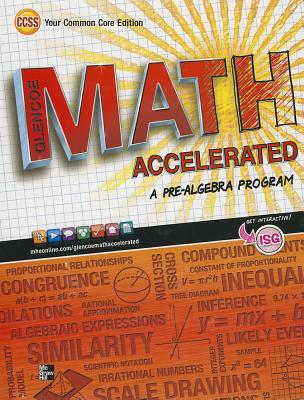
Concept explainers
To find: Predicted, actual population and percent error.
Answer to Problem 36HP
Predicted population =
Actual population
Percent error
Explanation of Solution
Given information:
Student population at present
Student population predicted to rise
Actually, population rose
Percent error
Where
From given information
Student population at present
Student population predicted to rise
Predicted value of population after five years = student population at present
Therefore
Predicted value =
Student population at present
Actual value of population after five years = student population at present
Actual value =
Absolute value = predicted value
Therefore,
Percent error
Therefore
Predicted population =
Actual population
Percent error
Chapter 6 Solutions
Glencoe Math Accelerated, Student Edition
Additional Math Textbook Solutions
Elementary Statistics (13th Edition)
Algebra and Trigonometry (6th Edition)
A First Course in Probability (10th Edition)
Thinking Mathematically (6th Edition)
A Problem Solving Approach To Mathematics For Elementary School Teachers (13th Edition)
University Calculus: Early Transcendentals (4th Edition)
- Find the missing values by solving the parallelogram shown in the figure. (The lengths of the diagonals are given by c and d. Round your answers to two decimal places.) a 29 b 39 d Ꮎ 126° a Ꮎ b darrow_forwardA retractable awning above a patio lowers at an angle of 50° from the exterior wall at a height of y = 11 feet above the ground. No direct sunlight is to enter the door when the angle of elevation of the sun is greater than 70° (see figure). What is the length x of the awning? (Round your answer to two decimal places.) x = ft 7507 Suns rays 70°arrow_forwardhelp and show work plsarrow_forward
- Two ships leave a port at 9 a.m. One travels at a bearing of N 53° W at 10 miles per hour, and the other travels at a bearing of S 67° W at 14 miles per hour. Approximate how far apart they are at noon that day. (Round your answer to one decimal place.) miarrow_forwardIn the triangle below, x = 7. Use the Law of Cosines to solve the triangle. A = B = C = 12 cm 18 cm B x cm ° о °arrow_forwardA triangular parcel of ground has sides of length 750 feet, 650 feet, and 535 feet. Find the measure of the largest angle. (Round your answer to one decimal place.)arrow_forward
- A boat is sailing due east parallel to the shoreline at a speed of 10 miles per hour. At a given time, the bearing to a lighthouse is S 70° E, and 15 minutes later, the bearing is S 63° E (see figure). The lighthouse is located at the shoreline. Find the distance d from the boat to the shoreline. (Round your answer to one decimal place.) x mi N 63° WE 70° Sarrow_forwardA 120-foot vertical tower is to be erected on the side of a hill that makes a 6° angle with the horizontal. Find the length of each of the two guy wires that will be anchored 75 feet uphill and downhill from the base of the tower (see figure). (Note that x = 120 in the figure. Round your answers to one decimal place.) shorter wire longer wire x ft ft ft XXXX -75 ft -75 ftarrow_forwardhelp with workarrow_forward
- ۳/۱ +① العنوان I need a detailed drawing with explanatic Le R2X2 2) slots per pole per phase = 3/31 B: 18060 msl Kas Kdl Sin (1) I sin () sin(30) Sin (30) اذا ميريد شرح الكتب بس بالفراغ Cos (30) 0.866 4) Rotating 5) Synchronous speed, 120 x 50 SE 1000-950 1000 Copper losses 5kw 6 50.05 Rotor input 5 0.05 loo kw اذا ميريد شرح الكتب فقط ok 7) rotov DC 1000 rpm ined sove in peap PU + 96er Which of the following is converge, and which diverge? Give reasons for your answers with details. When your answer then determine the convergence sum if possible. 1/n -√ Which of the following is converge, and which diverge? Give reasons for your answers. with details. When your answer then determine the convergence sum if possible. 3" 6" '1Σn=1 (2-") n T GI Marrow_forwardV ined sove in peaper Pu+96er Which of the following is converge, and which diverge? Give reasons for your answers with details. When your answer then determine the convergence sum if possible. 21/11 55 a Which of the following is converge, and which diverge? Give reasons for your answers with details. When your answer then determine the convergence sum if possible. 1Σn=1 (2-") n° 3" 6"arrow_forward: +0 1 R2X2 العنوان I need a detailed drawing with explanation L L 2) slots per pole per phase = 3/31 B = 180-60 msl Kd Kol, Sin (Info) Isin (6) sin(30) Sin (30) اذا ميريد شرح الكتب بس 0 بالفراغ 3) Cos (30) 0.866 4) Rotating 5) Synchronous speed, 120 x 50 6 50105 1000 S=1000-950 Loco mem 6. Copper losses: 5kw Rotor input loo kw 0.05 اذا ميريد شرح الكتب فقط look 7) rotov DC ined sove in peaper Pu+965 4 Which of the following is converge, and which diverge? Give reasons for your answers with details. When your answer then determine the convergence sum if possible. 111Σm=1 sin() Lake Which of the following is converge, and which diverge? Give reasons for your answers with details. When your answer then determine the convergence sum if possible. T TH Marrow_forward
 Calculus: Early TranscendentalsCalculusISBN:9781285741550Author:James StewartPublisher:Cengage Learning
Calculus: Early TranscendentalsCalculusISBN:9781285741550Author:James StewartPublisher:Cengage Learning Thomas' Calculus (14th Edition)CalculusISBN:9780134438986Author:Joel R. Hass, Christopher E. Heil, Maurice D. WeirPublisher:PEARSON
Thomas' Calculus (14th Edition)CalculusISBN:9780134438986Author:Joel R. Hass, Christopher E. Heil, Maurice D. WeirPublisher:PEARSON Calculus: Early Transcendentals (3rd Edition)CalculusISBN:9780134763644Author:William L. Briggs, Lyle Cochran, Bernard Gillett, Eric SchulzPublisher:PEARSON
Calculus: Early Transcendentals (3rd Edition)CalculusISBN:9780134763644Author:William L. Briggs, Lyle Cochran, Bernard Gillett, Eric SchulzPublisher:PEARSON Calculus: Early TranscendentalsCalculusISBN:9781319050740Author:Jon Rogawski, Colin Adams, Robert FranzosaPublisher:W. H. Freeman
Calculus: Early TranscendentalsCalculusISBN:9781319050740Author:Jon Rogawski, Colin Adams, Robert FranzosaPublisher:W. H. Freeman
 Calculus: Early Transcendental FunctionsCalculusISBN:9781337552516Author:Ron Larson, Bruce H. EdwardsPublisher:Cengage Learning
Calculus: Early Transcendental FunctionsCalculusISBN:9781337552516Author:Ron Larson, Bruce H. EdwardsPublisher:Cengage Learning





